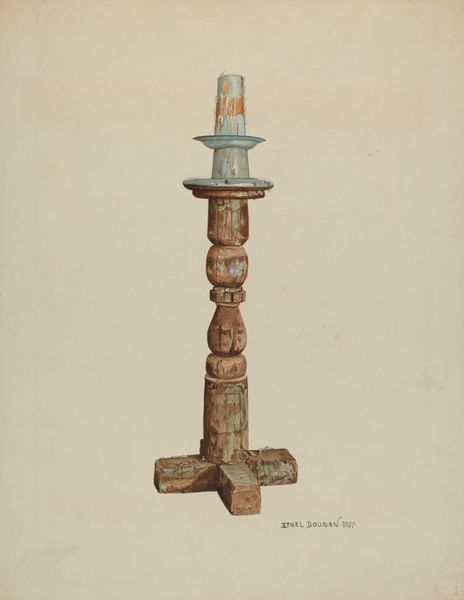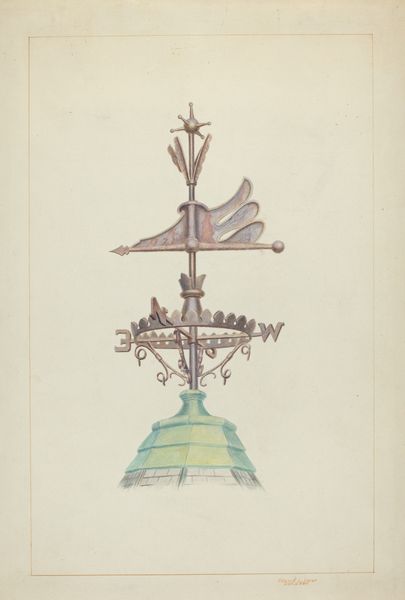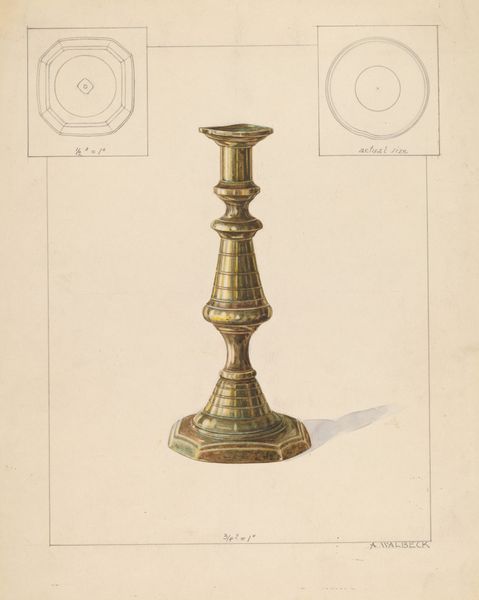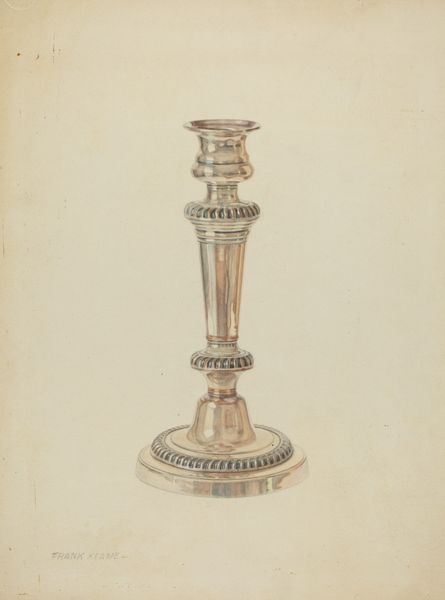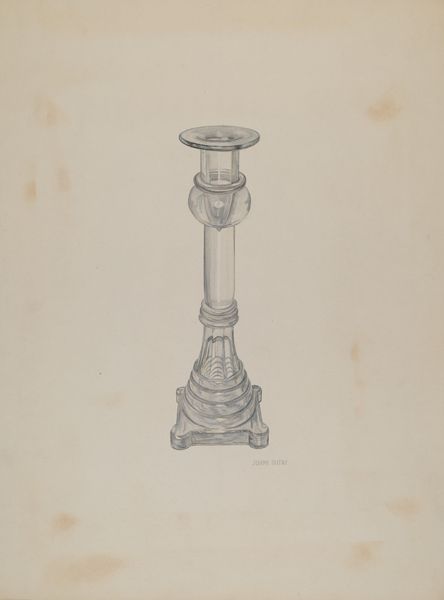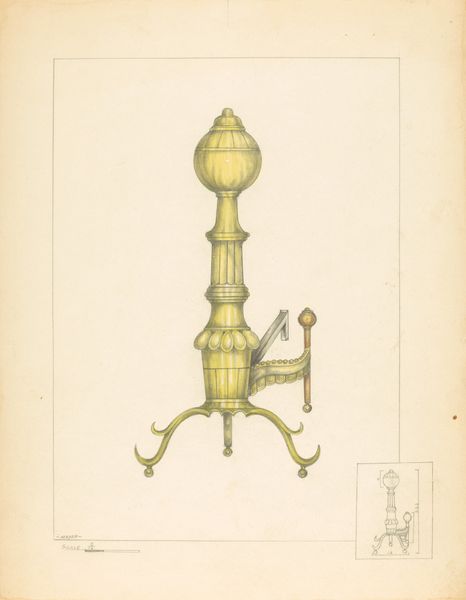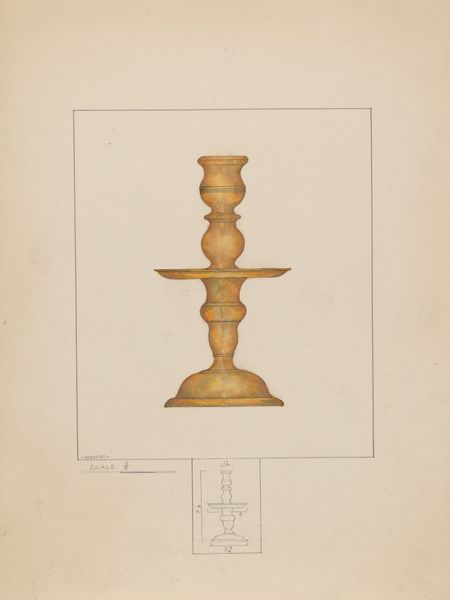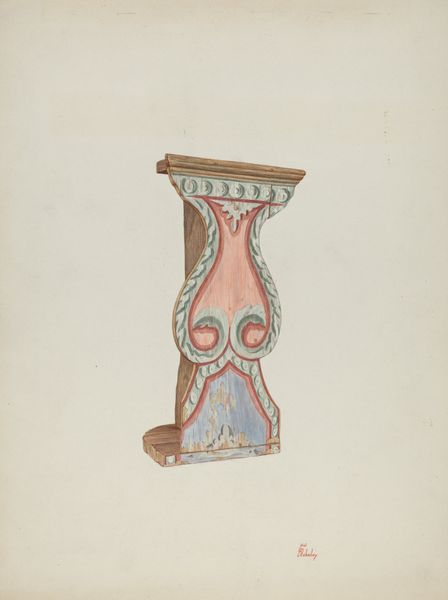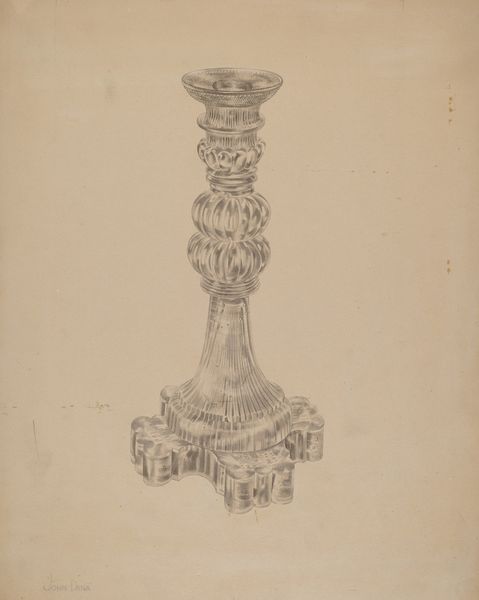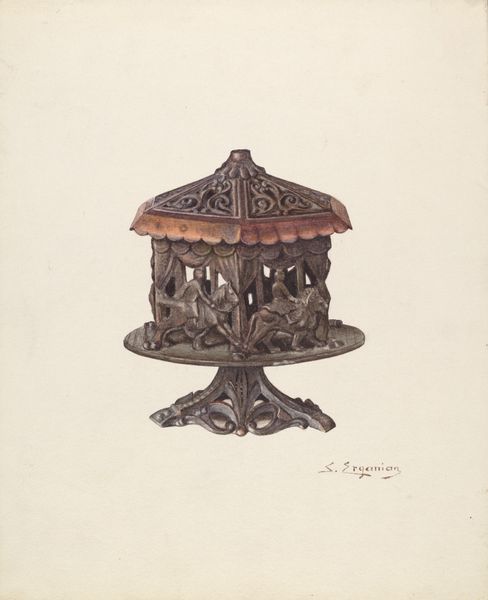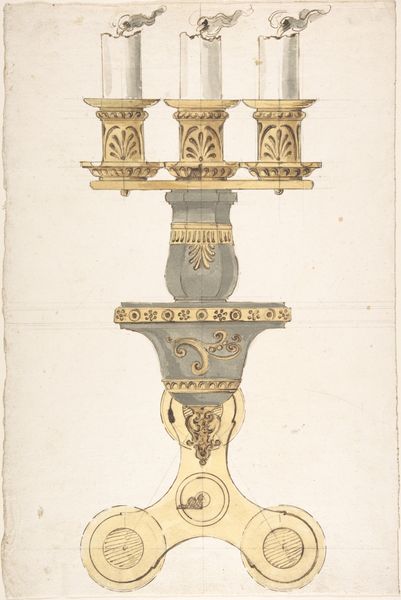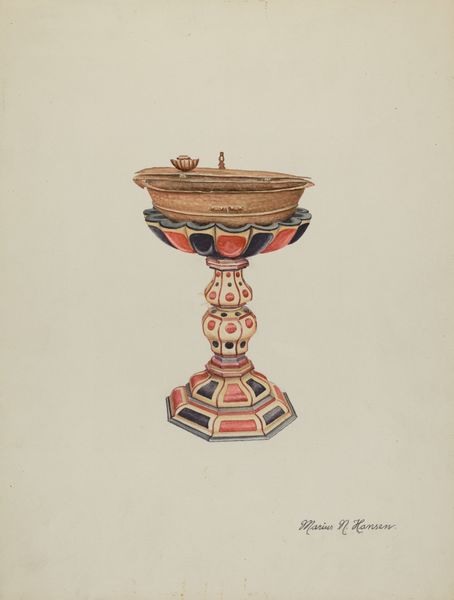
drawing, coloured-pencil, watercolor
#
drawing
#
coloured-pencil
#
watercolor
#
coloured pencil
#
decorative-art
#
watercolor
Dimensions: overall: 35.7 x 26.7 cm (14 1/16 x 10 1/2 in.) Original IAD Object: Approx. 22" high; 8" square base (exact)
Copyright: National Gallery of Art: CC0 1.0
Editor: Here we have William Kieckhofel’s “Ceremonial Candlestick,” made around 1941, using watercolor and colored pencil. It feels both solid and ethereal. How do you interpret this work, particularly within its historical context? Curator: Considering this piece was created around 1941, during a period marked by global conflict and societal upheaval, I see a potent intersection of faith, identity, and perhaps even resistance. How does decorative art, particularly ecclesiastical items, function during wartime? Does it act as a beacon of hope, or as a reminder of the traditions being fought for, or against? Editor: That's a great point. It almost feels like a call to tradition, but one depicted in quite a fragile medium – watercolor. Curator: Exactly. The choice of watercolor and colored pencil is interesting, isn’t it? Rather than using durable materials usually associated with ecclesiastical objects – metals or stone – Kieckhofel opts for impermanence. Could this be a commentary on the fragility of faith or societal structures during such tumultuous times? How does this contrast with the typical monumental scale of similar objects? Editor: I see what you mean. Its decorative-art style also places it at a critical juncture. Is it an attempt to harken back to safer times, or is the artist offering a visual commentary on the Church’s role during wartime? Curator: Precisely. What does this candlestick, rendered so delicately, tell us about the artist’s – and perhaps the broader community's – relationship to faith and authority at a time when both were being challenged? How does this seemingly simple object become a space for complex negotiation and reflection? Editor: Thinking about it as an exploration of fragility makes me appreciate it even more. Curator: Yes, viewing art through this lens invites us to challenge assumptions and engage in critical dialogues that transcend aesthetics.
Comments
No comments
Be the first to comment and join the conversation on the ultimate creative platform.
